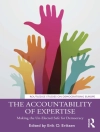Cities are at once among humanity’s crowning achievements and core drivers of the climate crisis. Their dependence on the outside world for vital resources is causing global temperatures to rise and wildlife habitats to shrink. But we have the opportunity to make cities more sustainable by transforming the built environment.
Dickson D. Despommier proposes a visionary yet achievable plan for creating a new, self-sustaining urban landscape. He argues that we can find solutions through the concept of biomimicry: emulating successful strategies found in nature. A better city is possible if we heed the lessons that forests and trees teach about how to store carbon, grow food, collect rainwater, and convert sunlight into energy. Touring established and leading-edge technologies, The New City provides a blueprint for tomorrow’s urban environment. Cities built from wood will be more resilient and less destructive than concrete and steel construction; they will also encourage reforestation, boosting carbon sequestration. Vertical farms inside city limits will supply residents with a reliable, healthy food supply. Buildings will harvest moisture from the rain and air to secure a clean water supply. Renewable energy, including not only wind, solar, and geothermal but also clear photovoltaic window glass and nonpolluting hydrogen fuel cells, will power a cleaner city.
The New City delivers both a passionate call to action for halting climate change and a bold vision of the sustainable future within our grasp.
Mục lục
List of Figures and Tables
Foreword, by Mitchell Joachim
Preface
Acknowledgments
Introduction
1. Pillar One: Carbon Storage
2. Pillar Two: Urban Agriculture
3. Pillar Three: Harvesting Water from the Air
4. Pillar Four: Renewable Energy
5. The New City Imagined
Appendix
Notes
Index
Giới thiệu về tác giả
Dickson D. Despommier (1940–2025) was emeritus professor of public health and microbiology at Columbia University. His previous books include The Vertical Farm: Feeding the World in the Twenty-First Century (2010), which popularized the idea of raising crops inside tall buildings; People, Parasites, and Plowshares: Learning from Our Body’s Most Terrifying Invaders (Columbia, 2013); and Parasitic Diseases (seventh edition, 2019).Mitchell Joachim is cofounder of the nonprofit architecture and urban design research group Terreform ONE and associate professor of practice at the NYU Gallatin School of Individualized Study.












